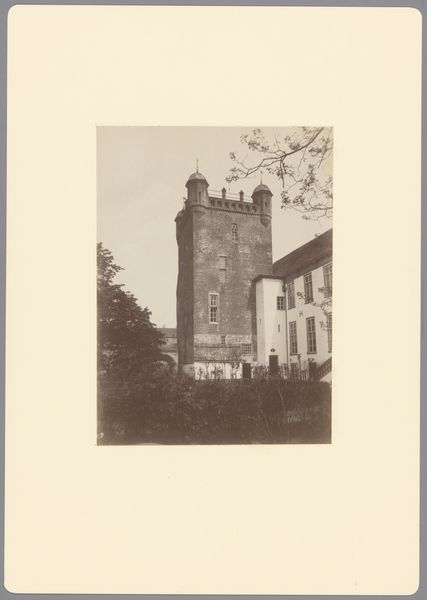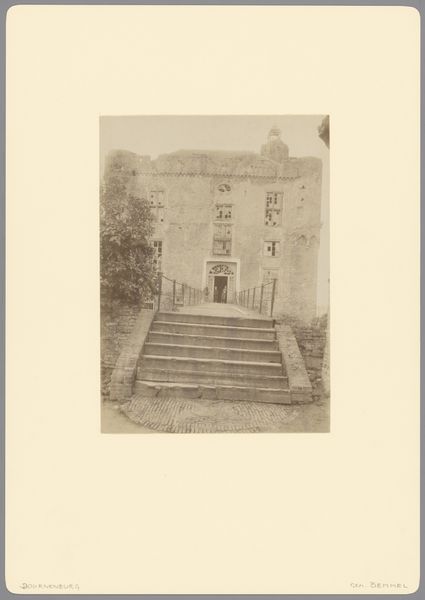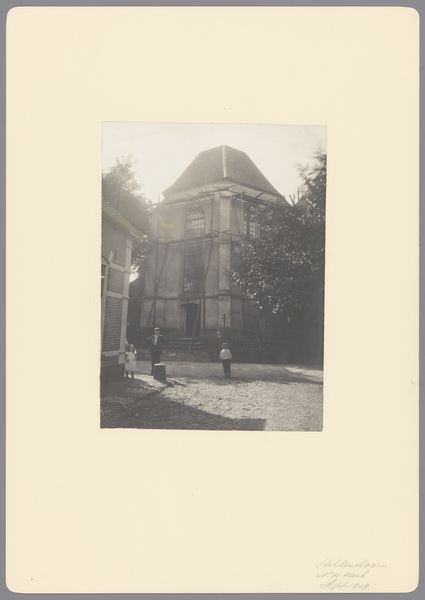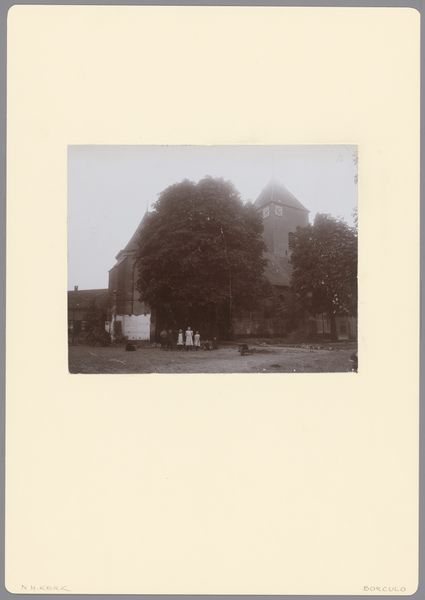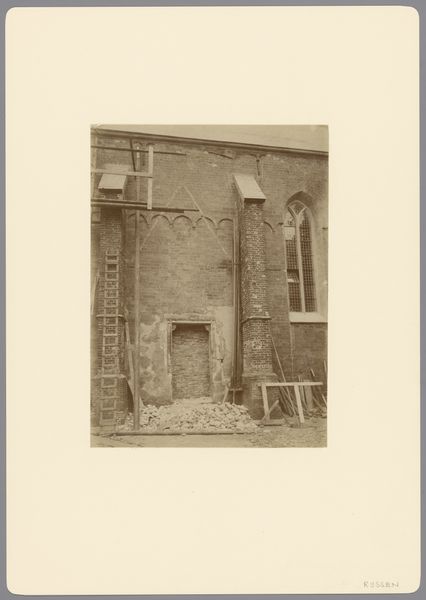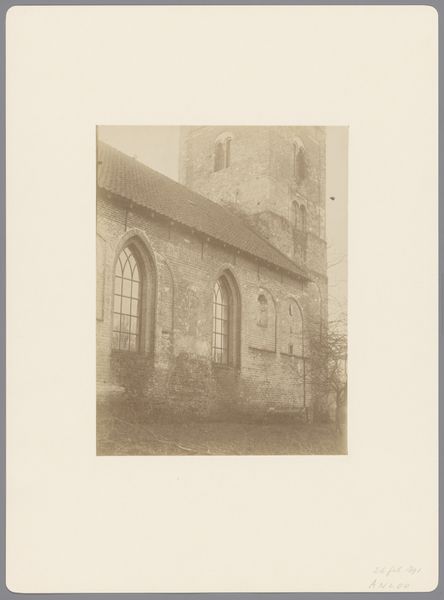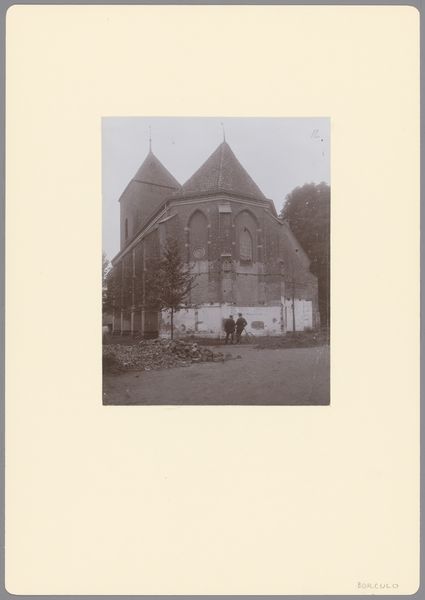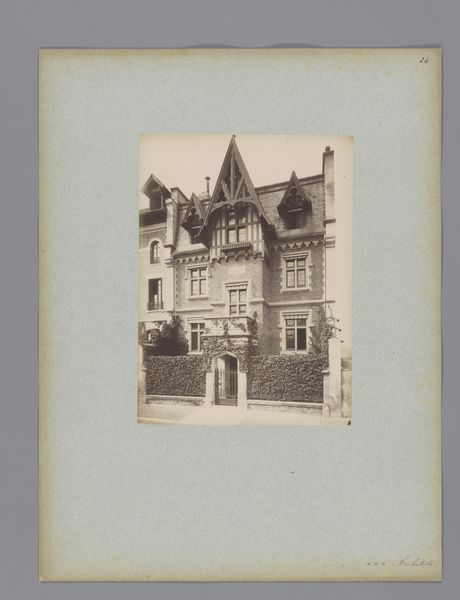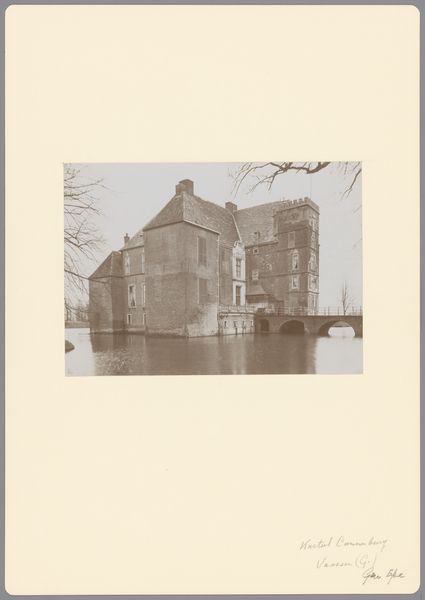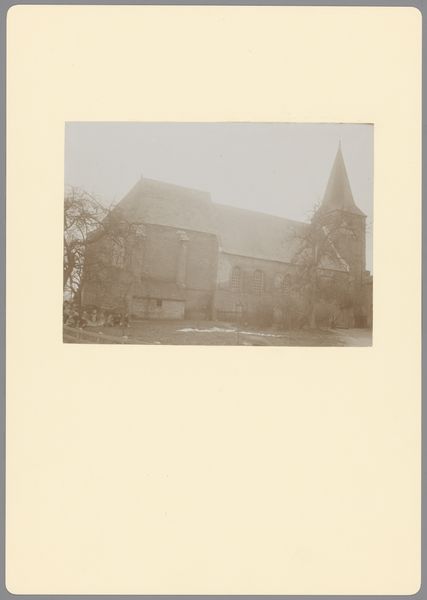
Dimensions: height 229 mm, width 170 mm
Copyright: Rijks Museum: Open Domain
Editor: Here we have a photograph from 1906, "Poort van de kasteelruïne te Batenburg," by an anonymous photographer working for Monumentenzorg. It presents the ruins of what appears to be a castle gate, with two figures standing in the shadowed opening. There's a really interesting tension between the rough, crumbling texture of the ruin and the straight lines of the added wooden gate. What strikes you about its visual language? Curator: Formally, it's quite intriguing. Consider the interplay of light and shadow: the foreground shrouded in darkness directs our gaze through the gate and beyond. The composition is decidedly divided. We see a tension between the crumbling cylindrical structure juxtaposed against that very rigid, modern gate, bisecting the organic decay with its insistence on geometric form. How does that visual friction speak to you? Editor: It feels like the photographer is contrasting the past and the present. The ruins are organic and chaotic, while the gate seems like a rigid, utilitarian imposition. The window up above seems like a ghostly remnant. Curator: Precisely. Notice, too, the textural variations. The rough, weathered stones contrast sharply with the smooth, planed surface of the gate. The anonymous photographer seems preoccupied less with a specific narrative, and more with arranging contrasts: rough and smooth, light and shadow, ruin and renovation. It is within these juxtapositions that the work finds its visual dynamism. Is it effective, do you think, or somewhat contrived? Editor: I think the strong contrast is what makes it work! You have this imposing structure yielding to the passage of time, yet it's been stabilized. I see those strong verticals repeated in the bars of the high window, almost a sign of human order. I guess it would feel flat without them. Curator: I concur. Ultimately, the strength resides in the tensions—visual and conceptual. It asks us to contemplate change through a structured visual framework. Editor: I had not noticed the relationship between the window's structure and the wooden planks of the added gate. Thanks! Curator: A pleasure to unpack these tensions. Visual analysis opens new pathways of seeing.
Comments
No comments
Be the first to comment and join the conversation on the ultimate creative platform.
